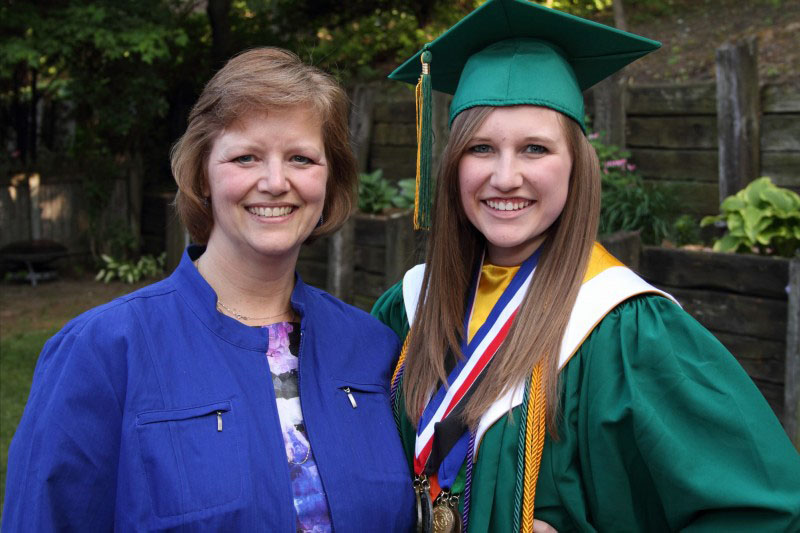enrollment
A parent’s observations on college orientation
Many of you who read these blogs on a regular basis have joined me on my journey as the parent of a prospective college student. My daughter Kylie graduated from high school as a member of the class of 2013 in May. Over the course of the past two years, I have written about her initial reactions to college direct mail, e-mail, and Web sites, and I have talked about how important it is to involve parents in the recruitment process, as well as shared our observations on college visits. Now as high school has been completed, we are looking more forward to the college experience ahead of her. This kicked off in earnest with Kylie’s initial registration, orientation, and advising session at her future college in May.

The four-year private, liberal arts college that Kylie has selected is within easy driving distance of our home and draws from a predominantly Midwestern student population. They offer their initial orientation sessions primarily in June, but also offer a daylong option in early May. Since the June dates didn’t work for our schedule, Kylie chose to participate in the May session, and we squeezed the Saturday event into our other end-of-the-high-school-year activities. Talk about feeling like we had our feet in two worlds! But the college event also served to help Kylie focus on the future rather than looking back.
Although Kylie was admittedly a little nervous about being on campus again and meeting her new peers, she had already begun to connect with other students in the college’s class of 2017 through their Facebook page. She was even able to meet one young woman in person during the event, and they both felt more comfortable with each other right away because of their previous Facebook interactions. (Is your campus using social media to build relationships for your incoming students? If not, I highly recommend it. The college also has a Facebook page for the college parents, which I learned about at orientation and immediately connected.)
I really liked how the college separated the orientation day into different segments. There was time for initial introductions to the campus and the expectations the college has for the students, which were presented while the parents were still in the room. (I especially liked the images of graduation that were included in this initial session, which sets the expectation up front that the student WILL graduate). Then the students went off to meet with their advisor to register for their first semester classes—without the parents—symbolically cutting the cord and signaling that the student is now responsible for making these selections on her own without the parents right there.
While they were doing that, the college offered a session just for the parents, to answer our questions on residence life, move-in, meal plans, safety, academic support services (including career services), health services, etc. As parents, we appreciated the opportunity to ask those “stupid” questions that our kids would never want us to ask while they were around, but the college administration didn’t let us feel stupid while we were asking them. And with my appreciation of the priorities of parents from the national data, I noticed the attention the college gave to safety and advising topics, as well as the direction the college provided on how to help the students resolve their own issues (setting the expectation up front that the parent should not contact the college directly all the time).
There was time during the rest of the day for parents and students to attend sessions on topics of interest, such as life as a student-athlete, introduction to the freshman English class, bringing a computer to campus, and other topics. We also walked around campus and got to see freshman dorm rooms and eat lunch in the cafeteria, which gave us additional insight into the life Kylie will be living next year.
When I was in college, orientation and registration took place after we had been moved in and dropped off by our parents. I think we were all likely very distracted by the rush of emotions and the apprehension that accompanies that experience. I know that because this event was held in May, I was much more focused on the information preparing me for her enrollment this fall than I would have been if it had been presented in August, before I got in the car and left my daughter behind! For colleges that don’t have the majority of their incoming students within easy driving distance, a May or June orientation may not be feasible, but consider your orientation options. Does it make sense to offer a couple of early summer options for those students who are accessible? Will it help to reduce your melt between deposits and enrollment? At the end of this orientation day, Kylie definitely felt more committed to the college, more excited about being there in the fall, and more confident about the classes she would be taking. As her parent, her excitement was contagious and I also now feel more confident about her next step in this journey.
Her high school graduation was a wonderful experience of gathering together with family and friends to celebrate Kylie’s accomplishments. I am planning on enjoying the next three months with her at home and I will be preparing myself (in part with the information provided at the orientation session) to get her started right for her next four years at college. Is your orientation and registration process getting your students and their families prepared in the best possible way? Please e-mail me if you would like to discuss this topic further. I can also share how you can use parent satisfaction assessments like the one Noel-Levitz provides to further enhance the student experience. I definitely look forward to sharing my perspectives when Kylie begins college this fall.
